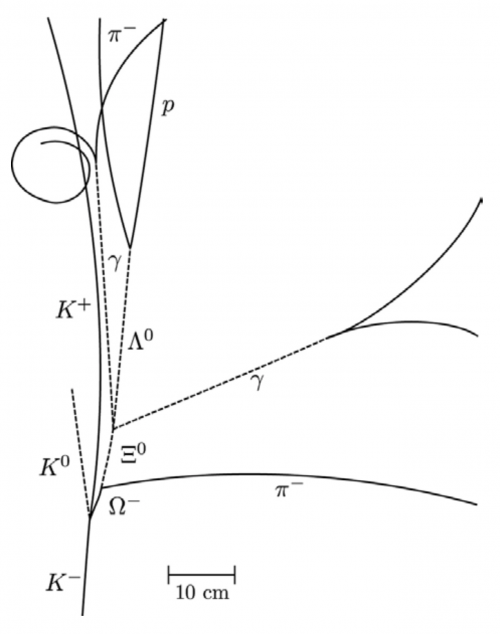Question
In this figure, a initially hits a proton, and creates three new particles. Identify them, and explain how quark flavors are conserved.

Final Answer
Solution video
OpenStax College Physics for AP® Courses, Chapter 33, Problem 18 (Test Prep for AP® Courses)

vote with a rating of
votes with an average rating of
.
Video Transcript
This is College Physics Answers with Shaun Dychko. Negative kaon impacts a proton right here and to answer which new particles are created, we should look just at the immediate products right after this point of collision. So ignore the negative pion and this λ particle and so on instead we should look just at what's created immediately after the collision. So we have a neutral kaon, a negative omega particle, and this positive kaon. And so we have negative kaon plus proton turns into neutral kaon plus positive kaon plus negative omega particle and then we will talk about how the quark flavor is conserved in this reaction. So we have an up anti-quark and a strange quark to make the negative kaon and I am getting this from table [33.4] in the textbook and a proton is an up, up, down quark and in total, we have one up quark among the two particles here because this anti-up quark cancels one of the up quarks on the proton so we are left with a single net one up quark and then we have one down quark and we have one strange quark on the left. On the right hand side, we have a single down quark because it's down and strange anti-quark for the neutral kaon and then up and strange anti-quark for the positive kaon and three strange quarks for the negative omega particle. So we have one down quark, we have one up quark and the two strange anti-quarks cancel with these two strange quarks leaving us with a one strange quark net on the right hand side as well. So we have the same total flavor of quarks on each side of this reaction.